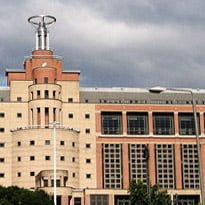The NHS Commissioning Board Authority has set out the areas to be covered by its local offices, following the abolition of primary care trust clusters and strategic health authorities.
The 27 local area teams, just one fewer than the number of strategic health authorities set up in 2002, will include nine teams in the North of England, eight in Midlands and the East, seven in the South and three in London.
The teams will cover between three and 12 clinical commissioning groups each with populations of between just over 1m and almost 3m.
The biggest population covered will be the South London local area office, with a population of 2.9m and 12 CCGs, while the smallest population will be covered by Durham, Darlington and Tees with 1.1m patients and five CCGs.
In a letter to the NHS, Ian Dalton, deputy chief executive of the NHS CBA and Professor Bruce Keogh, national medical director, said there was no single model of geographical footprint for a local area team.
They added that in London there will be a more integrated structure with three area teams, working as part of the overall pan-London arrangements for direct commissioning and functions supporting the delivery of service innovation.
The letter adds: “These arrangements reflect both the distinct nature of the London region and the need to ensure effective working with partners at both a Borough and London-wide level.”
The NHS CBA says all local area teams will have responsibility for direct commissioning of GP services, dental services, pharmacy and some aspects of optical services while 10 local area teams will lead on specialised commissioning across England.
Smaller numbers of local area teams will also be responsible for direct commissioning of other services such as military and prison health. The authority says the model for the commissioning of NHS public health services and interventions is still to be finalised.
Local area team directors are to be appointed by the end of July with roles advertised in the next few days followed by recruitment to other roles between July and the end of the year.
An accompanying briefing pack on the new teams adds: “We are working across the system, moving as quickly as we can at the same time as aiming to align the recruitment and transfer of staff at similar grades and levels.
“By working in a coordinated way we aim to maximise opportunities for staff and minimise uncertainty and disruption in the current system.”
The NHS CBA has also released details about the number and coverage of clinical senates which are to provide advice to CCGs, Health and Wellbeing Boards and the NHS Commissioning Board.
The letter from Dalton and Keogh says there will be 12 clinical senates and that details about who will be part of clinical senates and their roles will be released for discussion in the next few weeks.
Membership of the senates’ is to include clinicians and professionals from health including public health and social care plus patients and the public.
The NHS CBA says the 27 local area teams have boundaries which are largely aligned with the clinical senates except in three areas where boundaries cut across the local area teams to recognise the pattern or patient flows.
The boundaries of the 10 specialised commissioning hubs have also been aligned with the clinical senates.

